READY TO GET STARTED?
REQUEST A FREE ESTIMATE
Fill out the form below or call (888) 466-7849 for a free, no-obligation estimate.
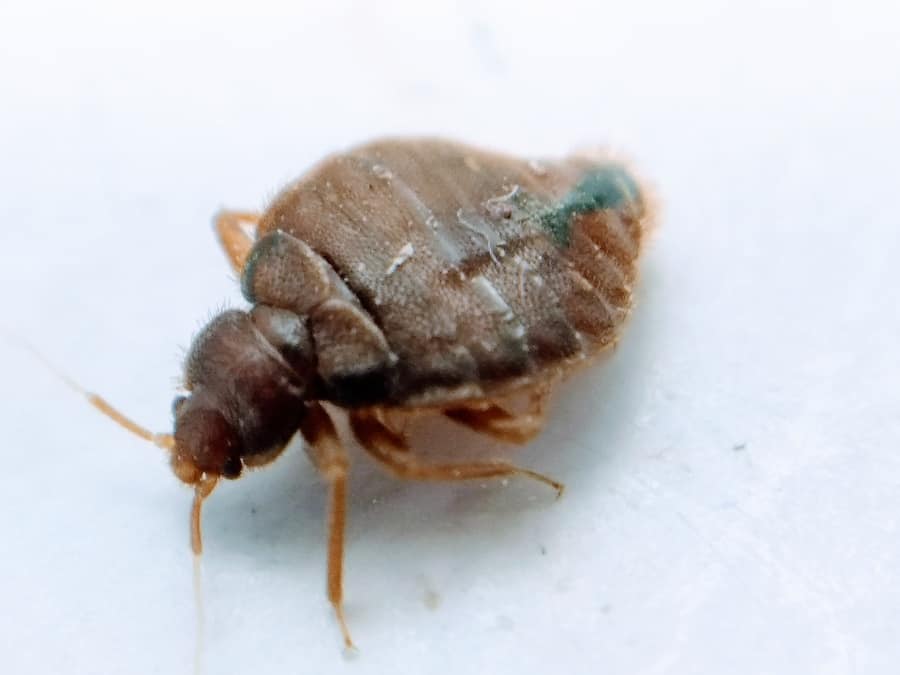
It’s the holiday season, the time of the year when a bed bug infestation can be devastating! Bed bug activity can be confused with only being active in the summer, but they are year-round pests. This means that while the weather cools off, bed bugs are still active during the winter and will be looking towards your Miami Lakes home for warmth! Here’s what you need to know about bed bugs, signs that they’ve infested, and how you can avoid them.
Bed bugs are extremely small, only growing to 3/16th of an inch in length. Before these pests feed, their appearance is brown in color and flat in body shape. After feeding, they become red, swollen, and longer in body length. These pests will often get around by hitchhiking through certain items. Adult bed bugs can be spotted by the human eye, but nymphs are harder to spot, as they are smaller and paler in appearance.
Bed bugs will infest several areas in the home, including behind baseboards, around mattress buttons, within bedding, electrical switch plates, picture frames, and more! There are certain warning signs of a bed bug infestation, including seeing their feces, casings, bloodstains on sheets, bites on yourself or family members, and their eggs. The best evidence, however, is seeing these pests crawling around in your home.
These pests are notorious hitchhikers, catching a ride inside your home through suitcases, old furniture, packages, clothes, and even houseguests. It’s important to be vigilant when traveling or having guests throughout the year. Check out our top preventative measures to avoid a bed bug infestation below,
If you’ve noticed signs of bed bugs or are looking to get ahead of bed bug prevention, consider reaching out to your local South Florida pest control company! These professionals will inspect your home, locate entry points, and recommend a treatment and prevention plan for your home.
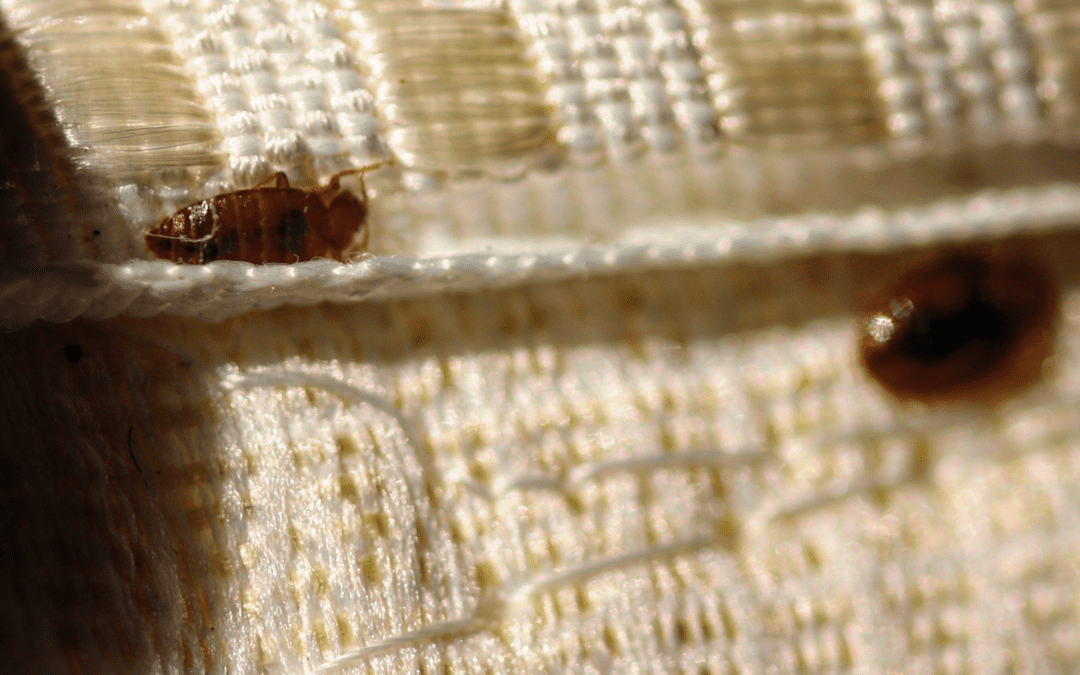
It’s time to unpack and get back to normal after all the summer vacations we were able to conquer. Hopefully, you came back to a stress-free situation that didn’t involve bed bugs; but if you weren’t one of the lucky ones, here are some tips to rid yourself of those unwanted pests.
Identify the pest to make sure it is indeed a bed bug. If you live in an apartment building, be sure to notify your landlord immediately, as they might have the responsibility of providing treatments. If you are in a single-family home, inspect all areas of your home to understand the extent of the infestation.
So, you have bed bugs, now what? Keep records throughout the whole process. Note dates and exact locations where these pests were found. This will help you track progress and to know where to target your removal efforts. You should be checking for at least a year after you’re done to make sure they are all gone.
Be sure to keep the infestation from spreading by implementing these tips:
Preparing for treatment is very important, whether treating bed bugs yourself or with professional help. If you plan on treating them yourself, ensure the methods you select are safe, effective, and legal. Avoid treatments that don’t work, like rubbing alcohol, kerosene, or gasoline, which are highly flammable. Sticky traps are also not effective in stopping bed bugs.
Some useful treatment solutions are:
The best solution for bed bugs is to contact your local pest control company. These professionals will have access to highly effective treatment methods. They will provide you with a bed bug control plan that is right for you and your property.
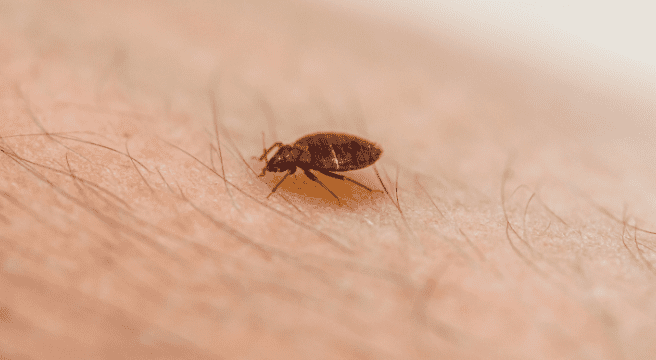
The old saying “don’t let the bed bugs bite” shouldn’t instill fear into your nighttime sleep. These fearsome insects bring itchy bites, crawling hordes, and ruined furniture. Bed bugs are one of the most difficult pests to get rid of. Identifying them and acting quickly is the first step in your plan of action. Let’s break down the basics of bed bugs and discover what to do if you suspect you have a bed bug infestation.
If you’re waking up finding mosquito-like bites all over, then that can be a tell-tale sign that you have bed bugs. But what does the culprit look like? Bed bugs are tiny, appleseed-sized insects. They are flat and oval-shaped with horizontal ridges across their bodies. Bed bugs don’t have wings, but they are extremely fast movers. Adult bed bugs are visible to the human eye and can be detected by sight. Bed bug nymphs can be harder to identify, as they are smaller in size and paler in color.
Bed bugs are notorious hitchhikers, allowing them to travel long distances. They latch onto suitcases, clothes, and linens, ending up wherever these items are taken. Therefore, the spread of bed bugs comes easily. A common place that bed bugs are found is in hotel rooms. It’s important to lookout for bed bugs when visiting a hotel. Before sleeping, thoroughly inspect hotel beds and pillows. Since they tend to travel easily, be sure to vacuum suitcases and inspect for any signs of bed bugs upon returning from a vacation.
If you have confirmed that you have bed bugs, you’ll want to act fast to get rid of them. Try a combination of these methods: heat and chemicals. This is considered one of the best ways to get rid of bed bugs. Bed bugs don’t like hot temperatures, so throwing items infested by bed bugs in the dryer on high heat for 20 minutes will remove them. If you travel often, you may want to start doing this with your belongings when you return home.
While throwing affected items in the dryer is an excellent choice to eliminate them, it doesn’t address a larger infestation, and it won’t find them in all their hiding places.
If you suspect a bed bug infestation in your home, it’s best to contact a professional pest control company to assess the situation. A trained professional can help decide the best plan of action, treatment, and prevention plan for your home.
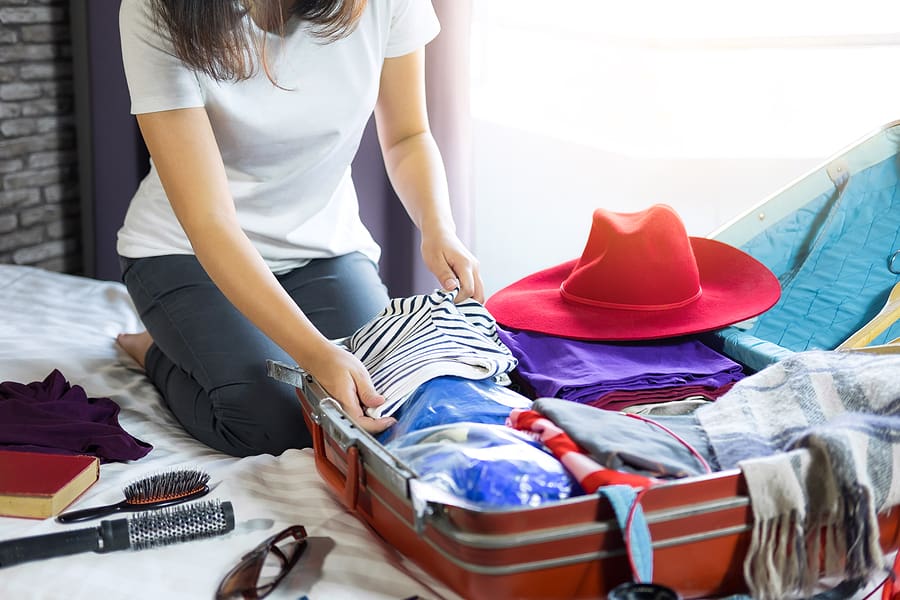
With the long-awaited holiday season approaching, many of us plan to travel and visit friends and family. Unfortunately, bed bugs are notorious for hitchhiking their way into hotel rooms, rented houses, family houses, and college dorms. Check out our top tips for preventing bed bugs before you travel this holiday season.
Inspecting Your Room
Before bringing your luggage into the room you are staying in, check thoroughly for signs of bed bugs. It’s more common for hotels to have issues with bed bugs, so it’s important to check each room. Inspect all furniture such as sofa cushions, chairs, and around mattresses corners. One sign of a bed bug infestation is seeing small, dark-colored stains on bedding and the skin shells they’ve shed.
If you suspect a bed bug infestation, ask to be moved or consider another place to stay.
Unpacking Luggage
Bed bugs are small and nocturnal, often allowing them to go unnoticed. Even after inspecting your room without finding any signs of bed bugs, continue to be cautious when unpacking your clothes. It’s recommended that you use the luggage racks instead of placing bags and suitcases on furniture or tables.
Returning Home
Once you have returned home, don’t bring the luggage and bags you traveled with inside. Instead, unpack your items outside the home and thoroughly inspect them. After inspecting your items, wash all your clothes immediately, making sure to run them through a high-heat dryer cycle, as bed bugs cannot withstand high temperatures.
After you have unpacked and washed your clothes, store your suitcases in your garage or storage closet. To be extra cautious, you can also seal your luggage in large, plastic storage bags before bringing them inside.
If you suspect a bed bug infestation in your home, it’s best to contact a professional bed bug control company to assess the situation. A trained professional can help determine the best plan of action, treatment, and prevention plan for your home.
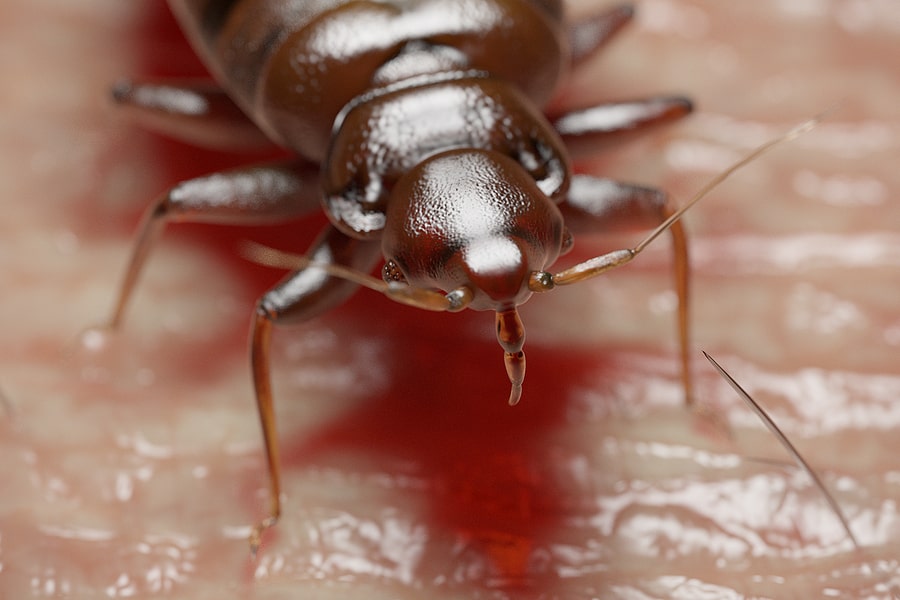
Traveling can be stressful. The last thing anyone wants to deal with on top of the routine stress of traveling is bed bugs. These pests are notorious hitchhikers and often catch rides with travelers on their luggage to move from place to place. How can you eliminate the potential for bed bugs while traveling? Here is our traveler’s guide to bed bugs to help make your trip as smooth and bed bug free as possible.
Properly identifying bed bugs is the first step to preventing an infestation. There are other common bugs that are often mistaken for bed bugs like carpet beetles, spider beetles, bat bugs, booklice, and fleas. Bed bugs are small, about 3/16″ to 1/4″ in length (about the size of an apple seed). If they have not fed recently, they are long and brown with a flat, oval-shaped body. If they have recently had a meal, they will be balloon-like and elongated with a reddish-brown color. They are “true bugs” with a 3-segmented beak, antenna with 4 parts, wings that aren’t used for flying, and short, golden-colored hairs. They also have an odor which is often described as sweetish or musty. Bed bug nymphs are smaller, translucent, and whitish-yellow in color. Bed bug eggs are tiny, about the size of a pinhead and are pearl white in color.
The next step in bed bug prevention is recognizing the signs of the presence of bed bugs. You should look for signs of bed bugs any time you are cleaning, changing bed linens, or inspecting the area where you are staying on a trip. Signs of bed bugs include rusty, reddish-brown stains on the bed sheets or mattress that happen when bed bugs are crushed; dark spots about the size of a period that are bed bug excrement that bleeds onto bed linens; eggs and eggshells that are tiny (about 1 mm in size); pale yellow skins that are shed by the nymphs; and live bed bugs. Any of these signs indicate the presence of bed bugs.
Bed bugs are tiny pests that can fit into a crack or crevice the size of a credit card. Knowing where bed bugs can hide is the next step to avoiding them. When checking for bed bugs, thoroughly inspect the piping, seams, and tags of mattresses and box springs; cracks in the bed frame and headboard; seams of chairs and couches; between cushions; in the folds of curtains; in drawer joints; in electrical receptacles and appliances; under loose wallpaper and wall hangings; where the wall and the ceiling meet; along baseboard seams and cracks; and in the head of screws.
Knowing how bed bugs act is essential to finding, eliminating, and preventing them. Bed bugs prefer to feed on humans but will also feed on other mammals and even birds. They will travel anywhere from 5 to 20 feet from their hiding spots to feed on a host. They are primarily nocturnal but will seek a host during daylight in larger infestations. They will feed on a host anywhere from 3 to 12 minutes. Bed bugs need at least 1 blood meal to be able to develop into the next stage of their life cycle. In order to continue to mate and produce eggs, both male and female bed bugs must feed at least once every 14 days. Females lay anywhere from 1 to 3 eggs per day and 200 to 500 eggs in their lifetime. They can survive temperatures as low as 46 degrees Fahrenheit but will die when their body temperature reaches 113 degrees Fahrenheit; hence the use of heat in bed bug treatments. Bed bugs can be found anywhere their hosts can be found.
Now that you know what bed bugs look like, where to find them, and how they act, the final step is how to prevent them. This is especially important when you are traveling. The first step is to check the bed bug registry to make sure the place you are staying doesn’t have any recently reported cases of bed bugs. Anytime you are staying outside your home, inspect the room where you are staying thoroughly for the presence of bed bugs. Use a flashlight and pull the sheet back to get a closer look. Inspect all of the areas listed above where bed bugs can hide. Use luggage racks to store your suitcases and bags and try to avoid putting them on the bed or the floor. Keep your belongings stored separately from those of the others you may be staying with. Consider storing your luggage in trash bags or protective coverings during your stay. If you find signs of bed bugs where you are staying, request to change rooms. If you must change rooms, do not move into a room that is adjacent to or directly above or below the infested room. When you return home from your trip, unpack your luggage directly into your washing machine and wash and dry everything on high heat. Inspect your luggage for bed bugs and use a vacuum or hand steamer to clean it before storing it. Keep luggage stored away from your bedroom, possibly in the basement or garage. Never store luggage under your bed.
With this traveler’s guide to bed bugs you will be well equipped for your next trip. If you suspect you have a bed bug infestation, contact a professional pest control company who can provide a thorough inspection and bed bug control service.
What You Should Know About Flies!
The Essentials of Crawlspace Moisture Barriers
I’ve Taken Precautions, But I’m Still Seeing Roaches!